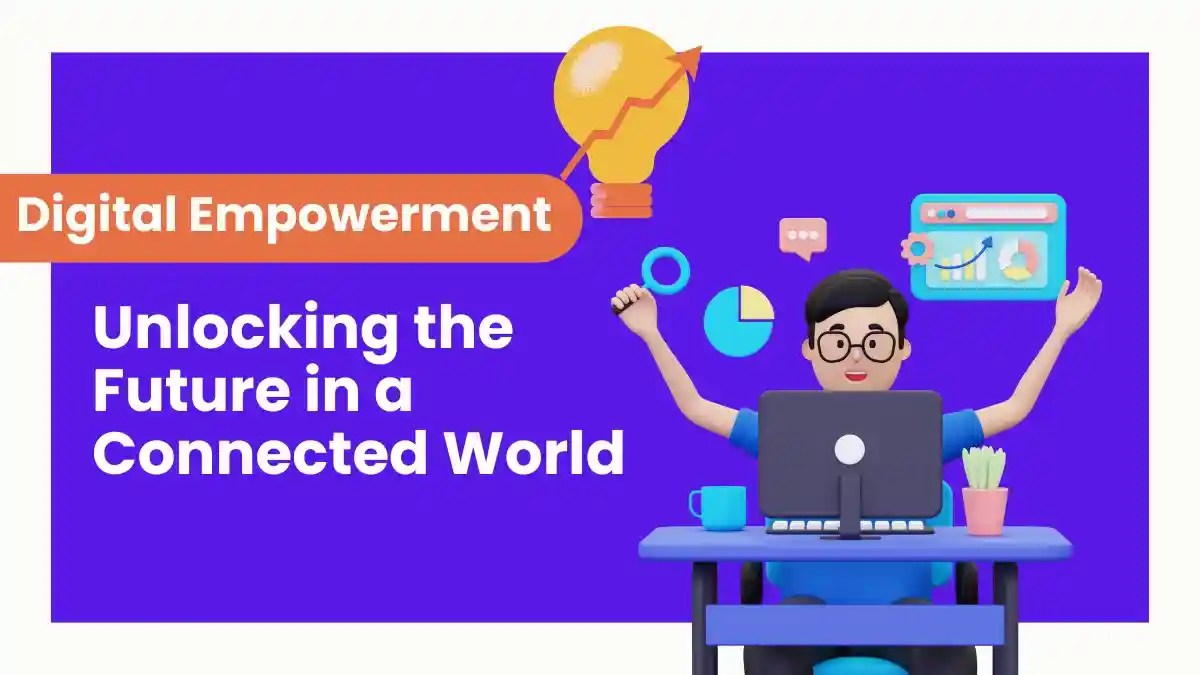The aroma of freshly brewed coffee hangs in the air at “The Connect Hub,” a small co-working space nestled in the heart of rural Oakhaven. Just five years ago, this building housed a largely unused library, a symbol of a community slowly fading as younger generations moved to cities seeking opportunity. Now, it buzzes with the energy of remote workers, budding entrepreneurs, and local artisans learning to sell their crafts online. This transformation isn’t about fancy infrastructure; it’s about digital empowerment – and it’s reshaping communities like Oakhaven across the globe.

The Connect Hub in Oakhaven exemplifies how digital access can revitalize a rural community.
For years, the narrative centered on the “digital divide” – the gap between those with reliable access to technology and the internet, and those without. It was often framed as an economic issue, and rightly so. But increasingly, we’re witnessing that closing the gap isn’t simply about affordability or infrastructure. It’s about fostering a sense of agency, skill development, and the ability for communities to define their own futures. Digital empowerment extends far beyond simply having a connection; it’s about utilizing that connection to create, innovate, and participate fully in the modern world.
The Shifting Foundations of Community
Traditionally, communities were geographically bound. Your opportunities were largely determined by your location – the local industries, the schools available, the proximity to larger markets. This created inherent limitations, particularly for those in rural or underserved areas. Digital technologies are dismantling these boundaries. A skilled artisan in a remote village can now reach a global customer base through platforms like Etsy Etsy. A farmer can utilize precision agriculture techniques, powered by data and sensors, to optimize yields and connect directly with consumers, bypassing traditional supply chains Precision Agriculture.
This isn’t to say geography is irrelevant. Local identity, shared experiences, and physical spaces still matter profoundly. But digital tools are augmenting those elements, adding layers of connection and opportunity that were previously unimaginable. Consider the rise of online community groups centered around shared interests, hobbies, or even local issues. These groups, facilitated by platforms like Facebook or Nextdoor, enable residents to connect, organize, and advocate for change, often with a speed and reach that traditional community organizing methods couldn’t match.
Economic Revitalization Through Digital Skills
The economic impact of digital empowerment is perhaps the most visible. The rise of remote work, accelerated by events of recent years, has allowed individuals to live where they choose while maintaining employment with companies located anywhere in the world. This influx of remote workers can bring significant economic benefits to smaller communities, injecting capital into local businesses and supporting local economies.
However, simply having broadband access isn’t enough. Individuals need the skills to participate in this new economy. This is where targeted digital skills training becomes crucial. Programs focusing on areas like digital marketing, web development, data analysis, and cybersecurity are equipping individuals with the tools they need to secure well-paying jobs or launch their own businesses. Organizations like General Assembly General Assembly and Coursera Coursera offer a wide range of online courses, making these skills accessible to a wider audience.
Furthermore, digital empowerment isn’t limited to high-tech professions. Even traditional industries are being transformed by technology. Farmers are using drones to monitor crop health, construction workers are utilizing Building Information Modeling (BIM) software, and healthcare professionals are leveraging telehealth platforms to reach patients in remote areas. The ability to adapt and embrace these new technologies is becoming essential for success in almost any field.
Empowering Voices and Fostering Civic Engagement
The transformative power of digital tools extends beyond economics into the realm of civic engagement. Online platforms provide citizens with new avenues for expressing their opinions, holding their elected officials accountable, and participating in the democratic process. Social media, while often criticized for its negative aspects, can also be a powerful tool for organizing protests, raising awareness about important issues, and mobilizing communities around shared goals.
Local governments are also leveraging digital technologies to improve service delivery and increase transparency. Online portals allow citizens to access public records, pay taxes, and report issues directly to city officials. Digital town halls and online forums provide opportunities for residents to engage in dialogue with their elected representatives.
However, it’s vital to acknowledge the potential downsides. The spread of misinformation and disinformation online poses a significant threat to informed civic engagement. Digital literacy – the ability to critically evaluate information and identify fake news – is therefore paramount. Initiatives that promote media literacy and critical thinking skills are crucial for ensuring that citizens are able to participate meaningfully in the digital public sphere.
Bridging the Remaining Gaps: Access and Inclusion
Despite the progress that has been made, significant challenges remain. While broadband access has expanded in recent years, it is still not universally available, particularly in rural and low-income areas. The cost of internet service can also be prohibitive for some households. Government initiatives, such as the Broadband Equity, Access, and Deployment (BEAD) program BEAD Program, are aimed at addressing these challenges, but more investment is needed.
Beyond access, digital inclusion is equally important. Simply providing internet access isn’t enough if people lack the skills, devices, or confidence to use it effectively. Digital inclusion programs should focus on providing affordable devices, digital literacy training, and ongoing technical support to ensure that everyone has the opportunity to benefit from the digital revolution. This includes specific considerations for vulnerable populations, such as seniors, people with disabilities, and individuals with limited English proficiency.
Furthermore, the design of digital technologies themselves must be inclusive. Websites and applications should be accessible to people with disabilities, adhering to accessibility standards like WCAG WCAG Guidelines. User interfaces should be intuitive and easy to navigate, regardless of a person’s technical skills or background.
The Role of Community Anchors
In many communities, “community anchors” – organizations like libraries, schools, and community centers – are playing a critical role in bridging the digital divide and promoting digital empowerment. These institutions often provide free internet access, computer training, and other digital literacy resources to local residents. They also serve as trusted sources of information and support, helping people navigate the complexities of the digital world.
The transformation of the Oakhaven library into “The Connect Hub” is a prime example of this. By reimagining its role as a community anchor, the library has become a vital resource for residents seeking to acquire digital skills, launch businesses, and connect with the wider world. This model is being replicated in communities across the country, demonstrating the power of local institutions to drive digital empowerment.
Looking Ahead: A Future Shaped by Digital Flourishing
The story of Oakhaven, and countless other communities, demonstrates that digital empowerment is not simply a technological issue; it’s a human one. It’s about creating opportunities, fostering inclusion, and empowering individuals to shape their own destinies.
We’re moving beyond a world where digital technology is a luxury afforded to some, and toward a future where it’s a fundamental tool for participation in all aspects of life. This requires a concerted effort from governments, businesses, and community organizations to ensure that everyone has the access, skills, and support they need to thrive in the digital age.
Consider the potential for hyperlocal economies powered by digital platforms. Imagine a network of small businesses in a rural area collaborating to offer a unique tourism experience, promoted and managed entirely online. Or a community-owned broadband network providing affordable, high-speed internet access to all residents. These are not futuristic fantasies; they are achievable goals, within reach if we prioritize digital empowerment.

Digital inclusion fosters collaboration and shared success within communities.
The journey towards full digital empowerment is ongoing. It demands constant adaptation, a willingness to learn, and a commitment to ensuring that the benefits of technology are shared by all. But the rewards – vibrant communities, thriving economies, and empowered citizens – are well worth the effort. The future isn’t just in digital; the future is built through digital empowerment, and the communities that embrace it will be the ones that flourish. It requires a shift in mindset – viewing digital tools not just as instruments of convenience, but as catalysts for connection, creation, and collective progress.






:max_bytes(150000):strip_icc()/GettyImages-872163938-5b35303a46e0fb0037eef112.jpg?w=768&resize=768,0&ssl=1)
